Building with blocks: building stories with words
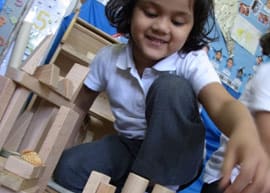
During a visit to a nursery to explore developing language through outdoor play, I was sharing out a collection of pine cones. Three-year-old Elizabeth was very keen to have as many different sizes of cone in her bucket as possible. She was very quiet, so I gave her a very big cone and said, “That’s the daddy,” then a slightly smaller one and said, “That’s the mummy. Would you like the baby next, or the big sister?” This was enough to get Elizabeth talking, and soon we had selected a whole ‘family’ of pine cones.
This seemed to me to be incredibly sophisticated. But then I saw a one-year-old pick up her dad’s calculator and ‘pretend’ that she was talking on the phone. Now that is sophisticated!
This type of symbolic play can start very young, and it is argued that children need to be able to use one object to represent something else before they can start to use words to represent objects in spoken language.
I was reminded of this little incident a few weeks later, when I visited Community Playthings in Robertsbridge, East Sussex, with a group of colleagues. Community Playthings have been developing wooden furniture and play equipment to supply schools and early years settings for over 50 years. Helen and Martin Huleatt involved us in a discussion about how children all over the world use natural materials in play. Realistic toys can often hinder children’s imaginative play: after all a toy bus can only be a toy bus, but a pine cone can be a bus, Father Christmas, a tree and as one four year old told me, “That’s a Homer Simpson that is!”
So, armed with a bag of Community Playthings wooden Mini-unit blocks, and a small basket containing a selection of pebbles and other natural materials, I set off for the Foundation Unit at Gateway Primary School in Westminster. The children there are predominantly from families where English is not their first language, so children learn most of their English in school. My plan was to see how children might respond to my materials and whether we could make up some stories with these rudimentary objects.
Nursery Leader Jackie Unwin explained that, like most early years settings, they have a ‘construction area’ where children are encouraged to create structures with wooden blocks, and to role play building with toy tools. The area has photos of building sites, and a display of children involved in role play. Jackie described the area a ‘typically boy dominated space’, though some girls do take part in play activities. Our first thought was to set up our activity away from the construction area, because we wanted to involve girls and boys, and possibly children who would not usually visit the construction area.
We began with a group of twelve children and two adults, sitting on the floor round a colourful rug. I took a tall cylindrical block from my bag, and told everyone that it was Daddy Bear, then passed a block to each of the adults and asked them to tell me what theirs was. Each child was given a block in turn, and asked to think about what their block might be. Ideas included a car, a plane and a road, a piece of cheese, a Gingerbread Man, a phone and ‘just a rectangle’.
Then I placed my block in the middle of the rug and said, “This is Daddy Bear, and he’s going for a walk.” And with support and encouragement we all managed to make a story together! Granted it wasn’t a story that flowed naturally with a beginning, middle or end, but the children were all quite fascinated by this new activity and keen to join in.
After this brief session, I stayed on the rug with six children and helped them make up their own ‘stories’. This was their first experience of using blocks away from the construction area, and playing with them in a new way. Quite naturally the children did what they normally do with blocks: they built towers and houses, roads, runways and train stations. So I introduced the items from the basket of natural materials, including small pieces of sheep’s wool, pine cones, shells, twigs and stones. Crucially, I decided to ask each child a question: “Can you make a story?” This proved to be the main stimulus the children needed for them to shift from merely building structures and move towards creating a narrative. When each child had finished, instead of asking, “What have you made?” my question was, “Can you show us your story?” These simple changes in my language seemed to create a significant change in the children’s behaviour and thinking.
I asked Jackie and her team, including teachers Eva Fernandez-Rahman and Christine Perera, to continue using this new method and report back. They provided me with a very detailed report, and their main findings were:
1) The children responded well to this collaborative story making. The shape and size of the blocks were very important in suggesting what they could represent; e.g. the arch was used as a rainbow/phone/moon/banana/seesaw/smile; while the triangular block was a hat/pizza/sandwich/cake/shark/bird/woodpecker.
2) The children’s stories were based on their own experiences, including their families, animals, going to the park and the seaside, and on traditional stories such as The Three Bears, The Billy Goats Gruff and adventures involving princesses.
3) Children’s construction has developed, using more natural materials to add detail.
4) It was surprising to see that some of the children with the least spoken English could really access this story making in a way they haven’t shown when using puppets or other story props.
5) Some quiet children got very involved in the adult-led sessions and began to use the construction area more; e.g. two girls at an early stage of learning English made a construction, and then began to talk about it being cold. They pretended that they were shivering and found pieces of material and paper to make a ‘fire’.
6) The children enjoyed retelling their stories at the end of the session, often without the blocks.
7) This type of narrative development, and the abstract thinking needed, will help towards using the symbols of writing as well as supporting emerging creative writing.
8 ) This is an instant activity and it will become part of everyday life in our nursery!
So a little girl with three pine cones has reminded us that a plastic car can only be a car, but a rectangular block can be absolutely anything!
Play and the revised EYFS by Community Playthings from www.communityplaythings.co.uk
Michael Jones is a freelance trainer in young children’s communication. He led the Every Child a Talker project in three different boroughs. He has written widely on the subject of young children’s language and learning, and is co author of ‘Let’s get talking!’ and ‘Supporting quiet children’, both published by Lawrence Educational. To find out more about Michael’s work visit //www.talk4meaning.co.uk/.
Comments
Leave a Reply
Popular Teaching Resources
Stay Up To Date
Sign up for our newsletter and we’ll let you know when we create new early years resources.

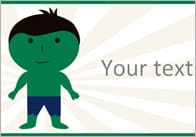

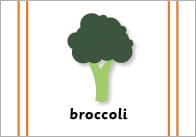
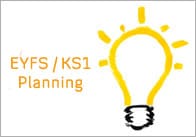
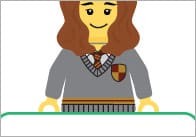
I tried this out yesterday in our setting and it worked really well, they were a bit dubious at first but they soon got into the spirit of things. We retold the Gruffalo, which was very popular.